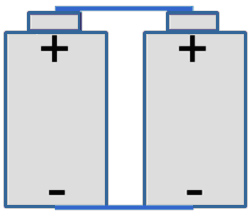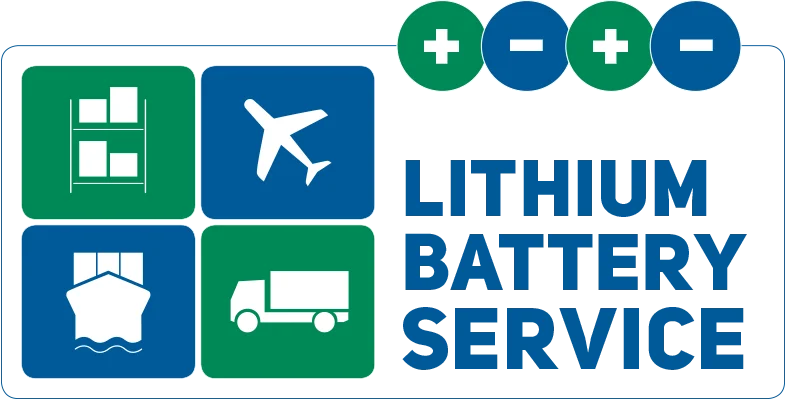Frequently Asked Questions
38.3-Test
see 38.3
Types of Lithium Batteries
Lithium batteries are basically distinguished as lithium metal batteries and lithium ion batteries. Lithium metal batteries in general are non rechargable and contain metallic lithium. Lithium ion batteries however don´t contain metallic anymore, but a lithium compound (lithium oxide) and they are rechargable. Often they are called accumulators.
UN Number
The United Nations (UN) have developed a classification system for dangerous goods. They will be assigned to classes according to their dangerous properties. Another order scheme are the UN numbers, i.e. each dangerous goods must be assigned to a four-digit number, the so called UN number. For lithium batteries at first you have the following UN numbers:
| UN 3090 | LITHIUM METAL BATTERIES (including lithium alloy batteries) |
| UN 3091 | LITHIUM METAL BATTERIES CONTAINED IN EQUIPMENT (including lithium alloy batteries) |
| UN 3091 | LITHIUM METAL BATTERIES PACKED WITH EQUIPMENT (including lithium alloy batteries) |
| UN 3480 | LITHIUM ION BATTERIES (including lithium polymer batteries) |
| UN 3481 | LITHIUM ION BATTERIES CONTAINED IN EQUIPMENT (including lithium polymer batteries) |
| UN 3481 | LITHIUM ION BATTERIES PACKED WITH EQUIPMENT (including lithium polymer batteries) |
Addtionally there is for vehicles the UN number UN 3171 (for electrically powered vehicles only) and UN 3166 for hybrid vehicles.
The changes 2019 included a new UN number UN 3536 for LITHIUM BATTERIES INSTALLED IN CARGO TRANSPORT UNIT
Cell / Battery
What is the difference between a cell and a battery? For most people it is not so easy to distinguish the one from the other because we call both battery.
But for transport we unfortunately have to distinguish this on the technical level, because there are different limits for cells and batteries. The limits, when kept, lead under certain conditions to faciltations in transport. For this reason it makes sense to deal with some basics.
For your consideration here a few definitions. They may sound rather abstract because they are. But in the following we will show you some pictures and give you some explanations to them.
Cell
A single encased electrochemical unit (one positive and one negative electrode) which exhibits a voltage differential across its two terminals. Under these Regulations and the UN Manual of Tests and Criteria to the extent the encased electrochemical unit meets the definition of "cell" herein, it is a "cell" not a "battery", regardless of whether the unit is termed a "battery" or a "single cell battery" outside these Regulations and the UN Manula of Tests and Criteria.
Battery
Two or more cells which are electrically connected together and fitted with devices necessary for use, for example, case, terminals, marking and protective devices.
A single cell battery
A single cell battery is considered a "cell" and must be tested according to the test requirements for "cells".
Button cell
A round small cell when the overall height is less then its diameter.
Example of the nomenclature of a button cell:

Lithium Ion Cell
Nominal voltage 3,7 Volt
Capacity 1500 mAh = 1,5 Ah
Watt-hour rating = 3,7 V x 1,5 Ah = 5,55 Wh
Lithium metal cells often have a voltage of 3 Volt but there are also some with 3,6 or 3,7 Volt.

Lithium Ion Battery connection in parallel
Nominal voltage 3,7 Volt
Capacity 2 x 1500 mAh = 3000 mAh = 3 Ah
Watt-hour rating = 3,7 V x 3,0 Ah = 11,1 Wh

Lithium Ion Battery connection in series
Nominal voltage 2 x 3,7 Volt = 7,4 Volt
Capacity 1500 mAh = 1,5 Ah
Watt-hour rating = 7,4 V x 1,5 Ah = 11,1 Wh

Note for your daily practice
When the voltage is a multiple of 3,0 Volt or 3,7 Volt, it is a battery.
Unfortunately the reverse deducting that 3,0 Volt or 3,7 Volt always indicate a single cell does not work. So when the voltage is 3,0 Volt or 3,7 Volt it could also be a battery (connection in parallel). In that case one has to take a closer look at "the thing" and if need be take the data sheet for reference or ask the manufacturer.
